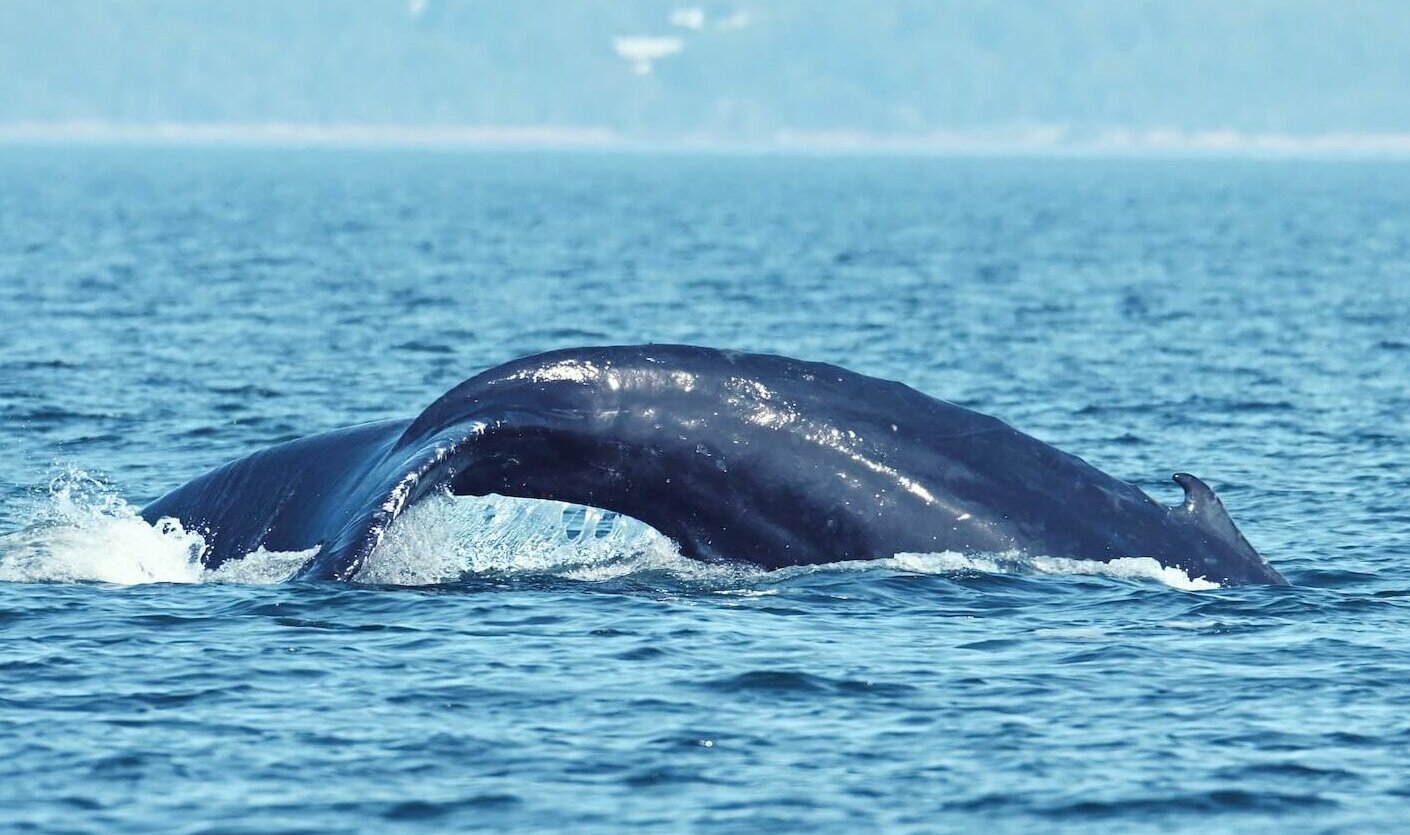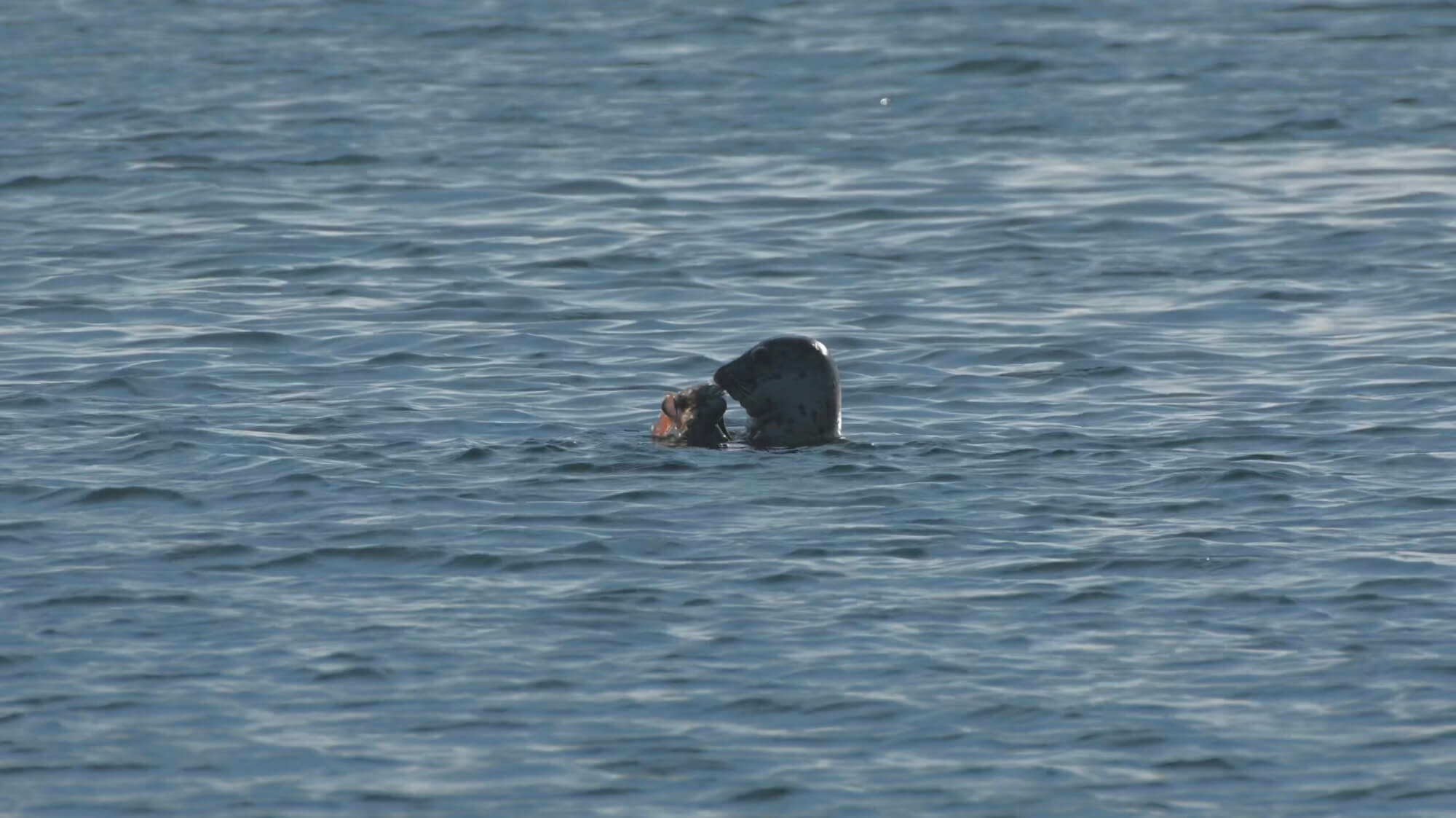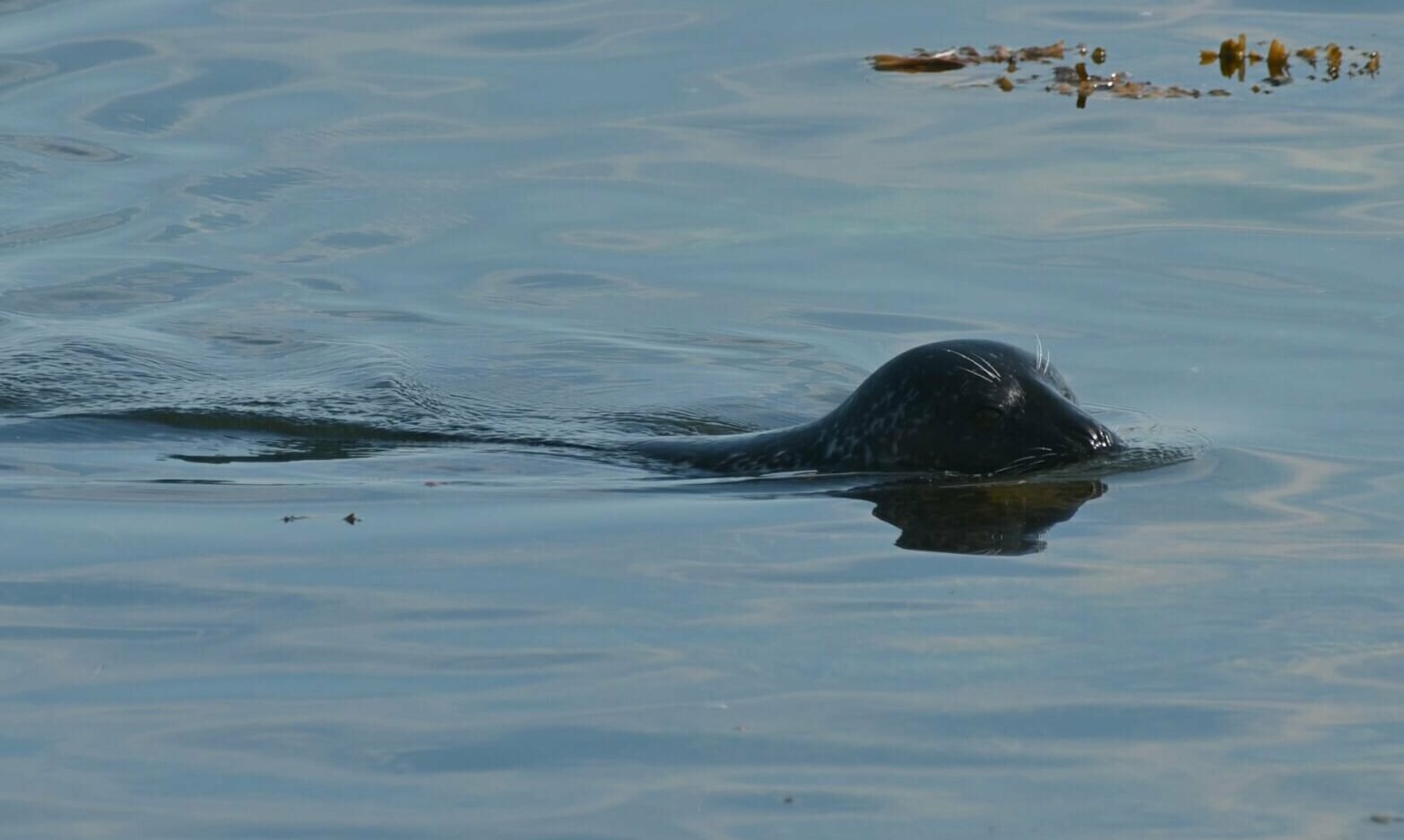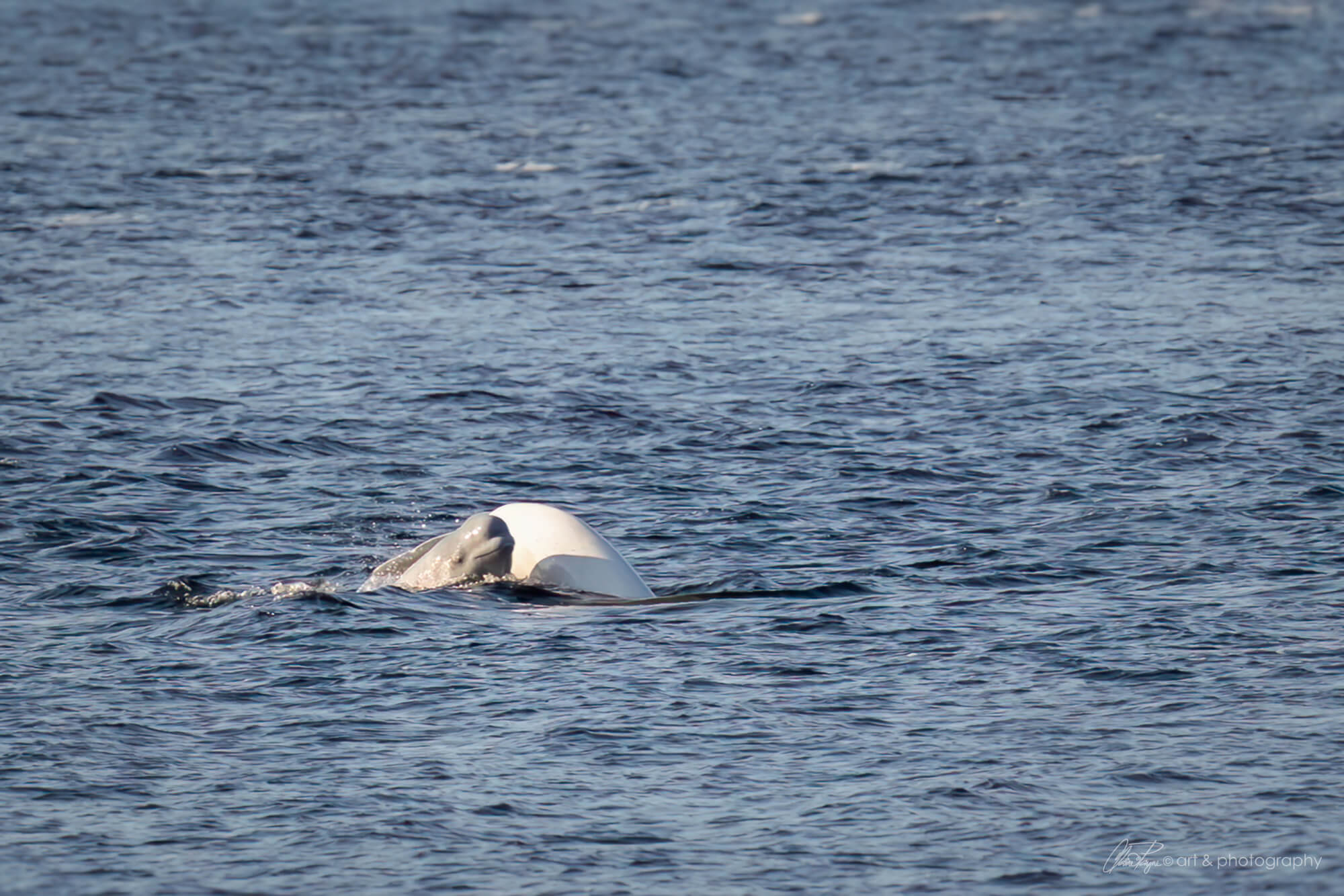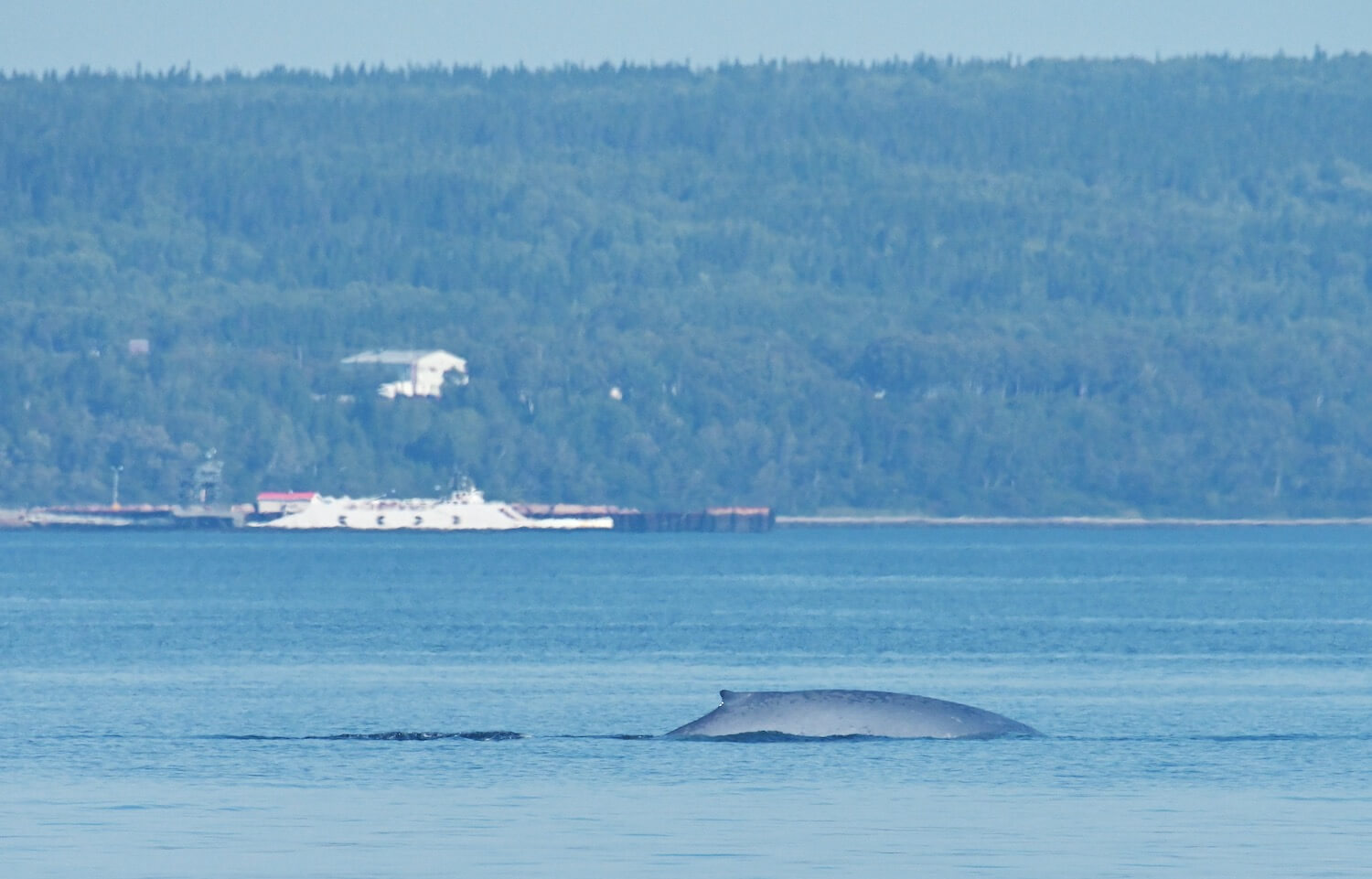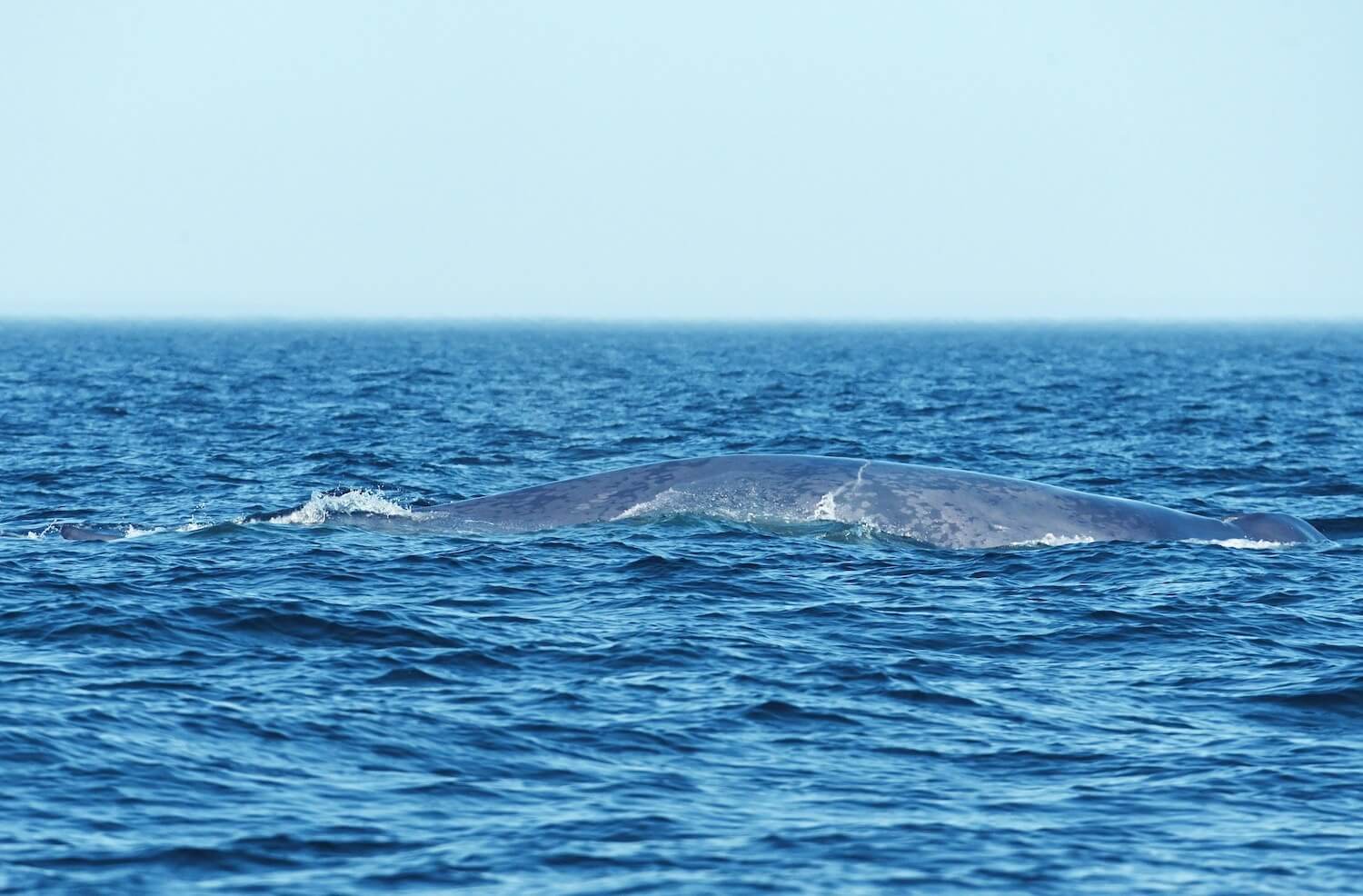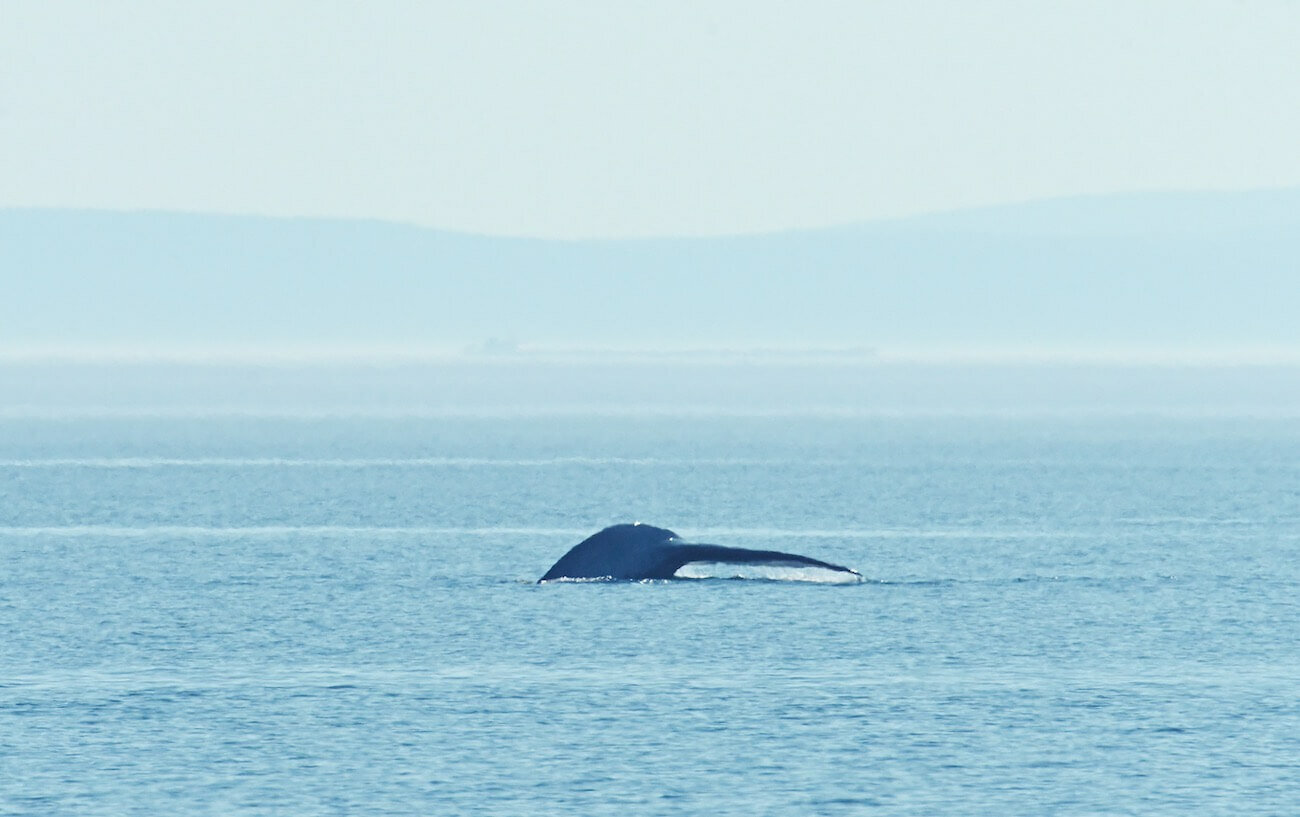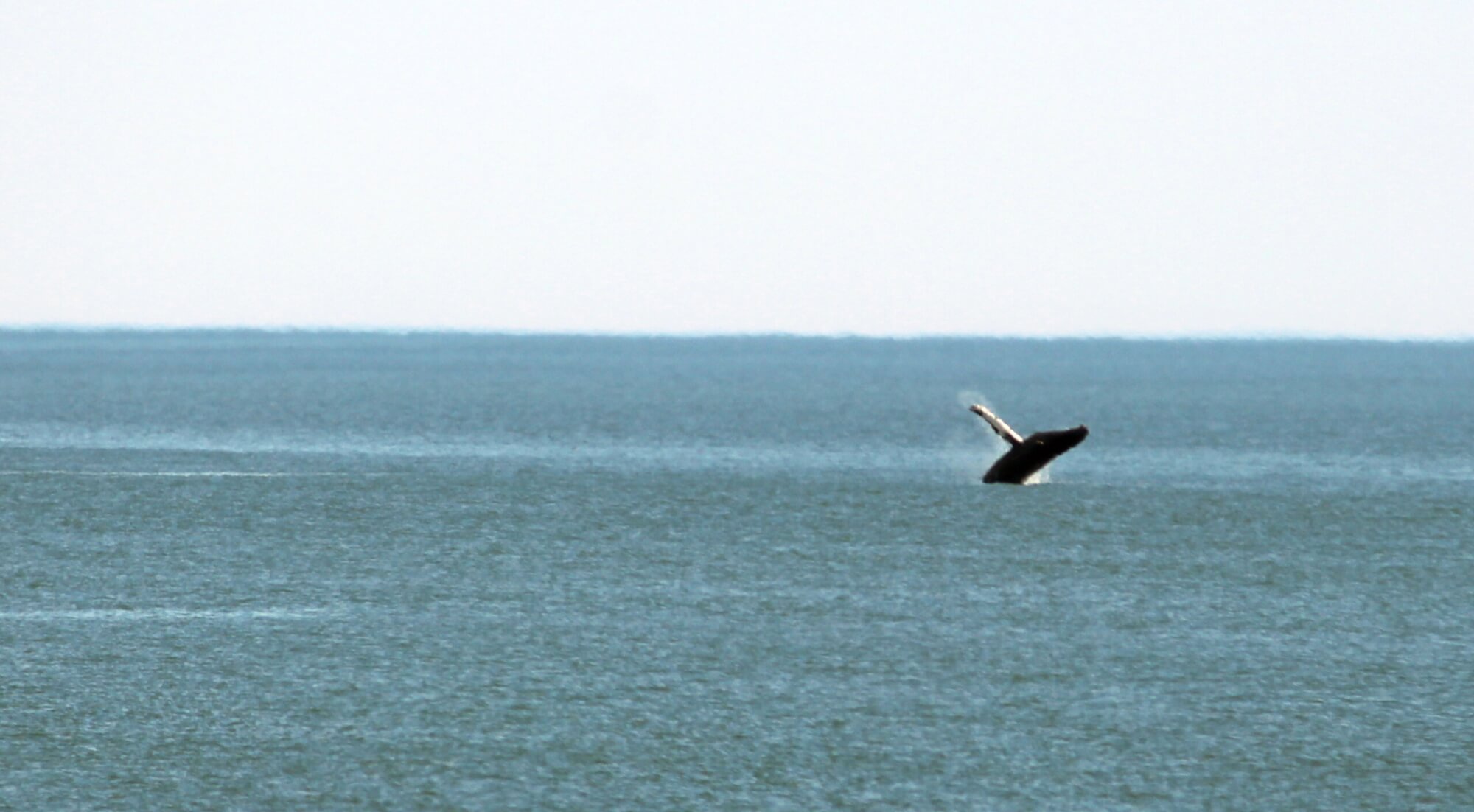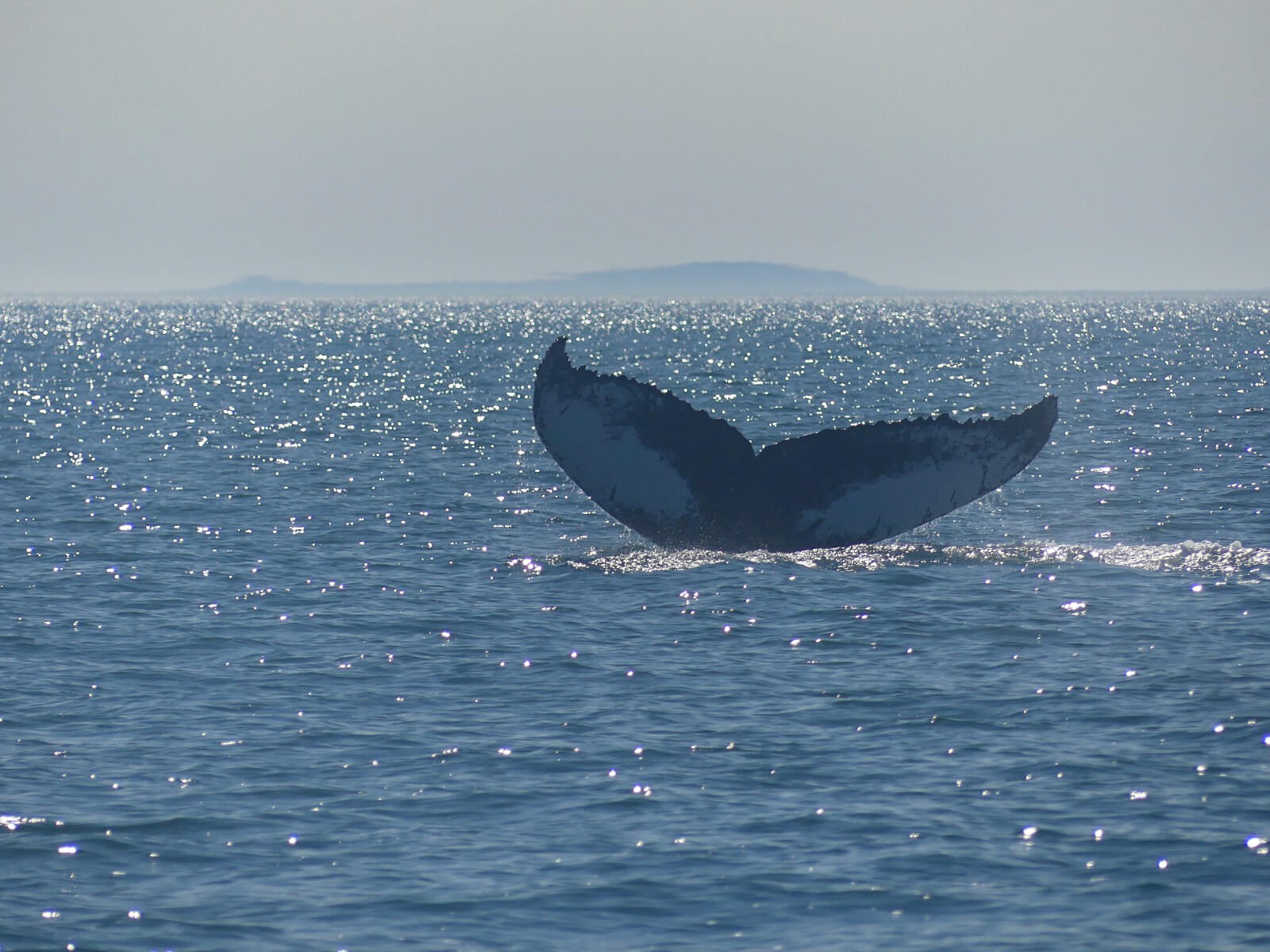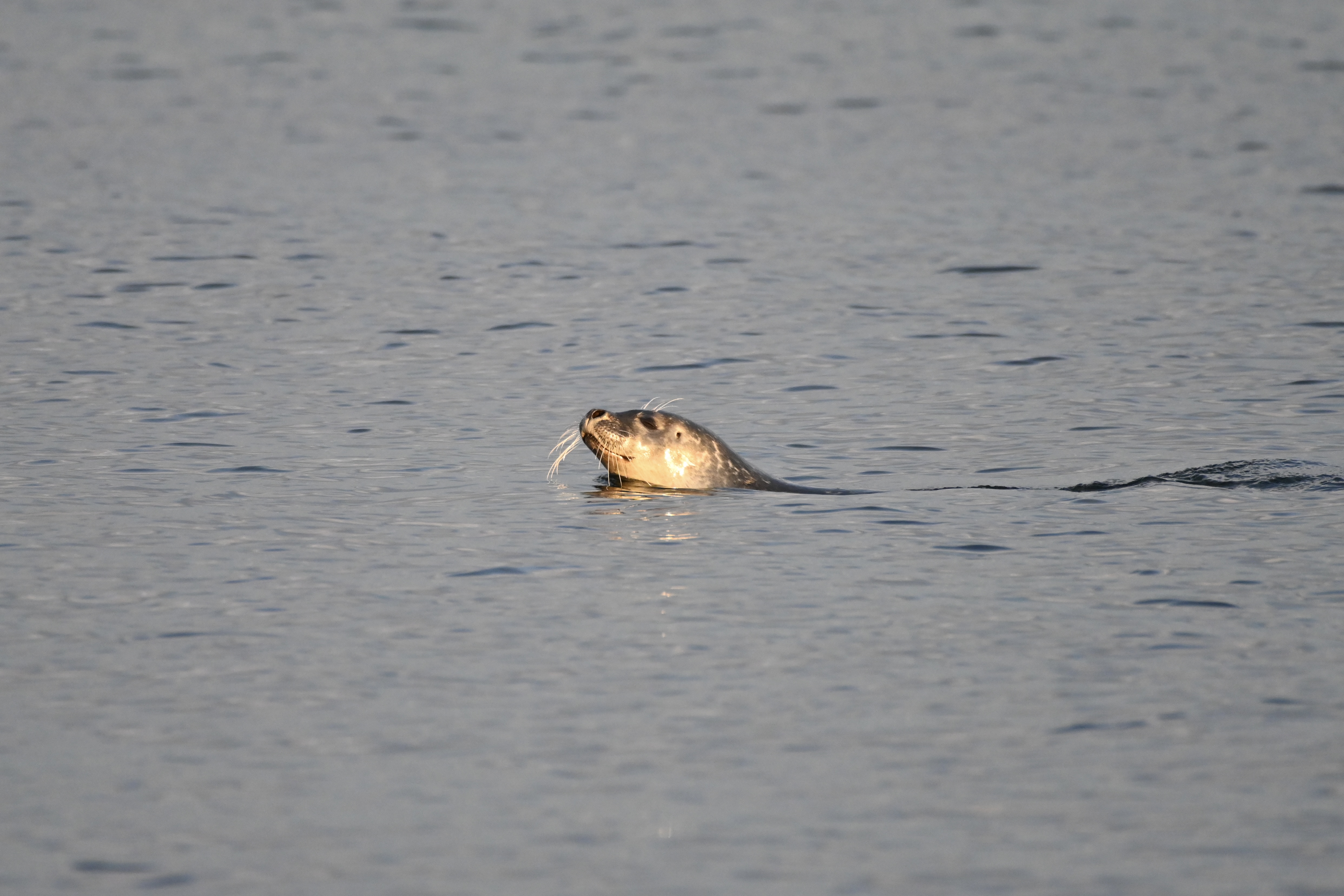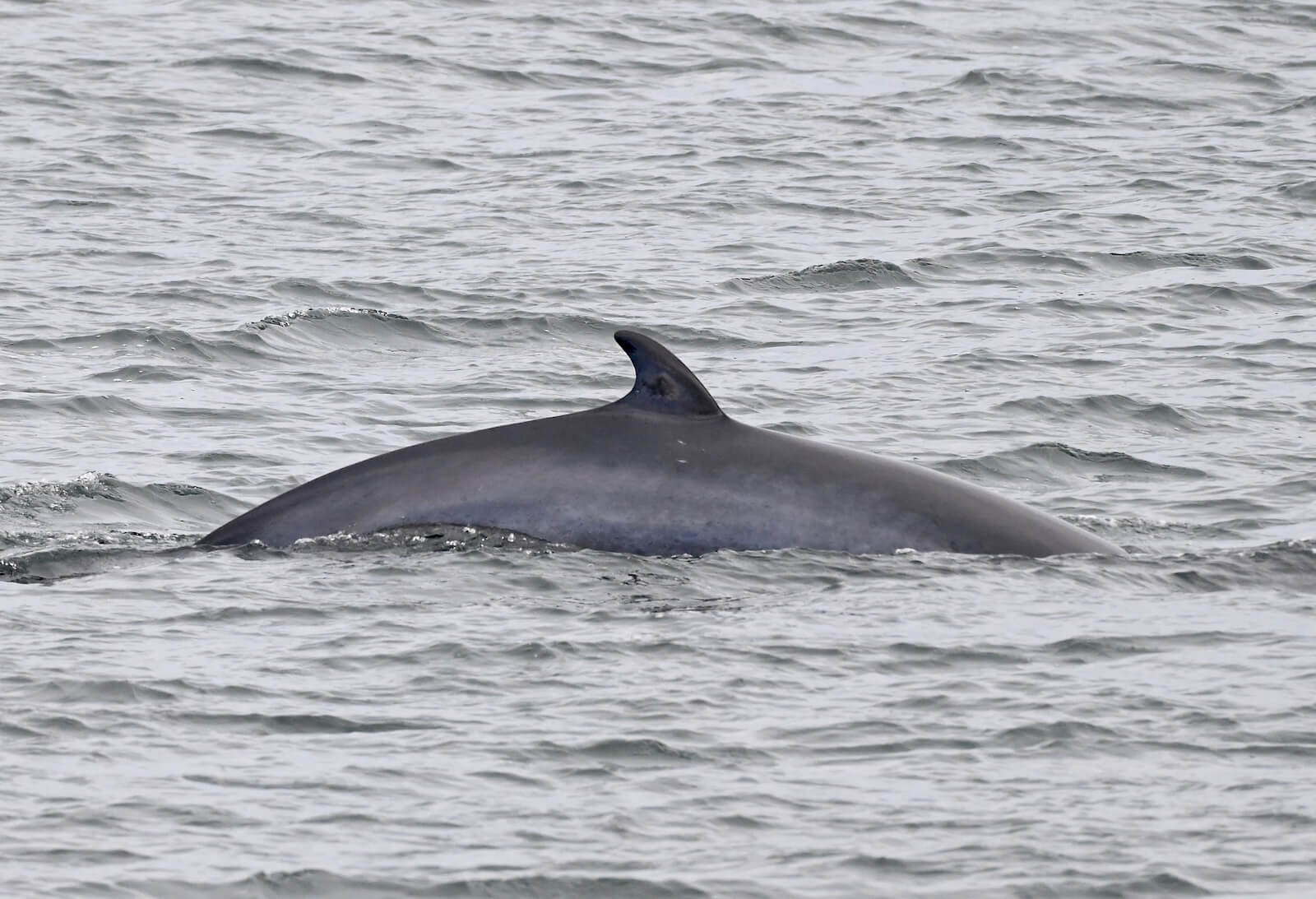Fair weather, cool autumn breezes… What more could you ask for this September? How about lingering blue whales, a host of marine mammals in the Gaspé Peninsula, right whales in the gulf and belugas big and small in Tadoussac!
Winds and tides on the North Shore
Strong southwest winds (known as suroits in French) made it difficult to pick out any marine mammals, often hidden by the waves breaking on the coasts. A regular in the region braved the gusts last weekend at Cap de Bon-Désir. She was able to chalk up “a few seals, two minke whales and several harbour porpoises that were struggling to make their way through the rough waves to breathe. ”
Despite the winds this past week, the Haute-Côte-Nord region was teeming with marine mammals: harbour porpoises, belugas, minke whales, humpbacks, fin whales and blue whales punctuated the choppy waters.
From Tadoussac, belugas and minke whales were seen multiple times a day. According to visitors to the region, minke whales still seem to be feasting at the mouth of the Saguenay Fjord, with sensational surface feeding behaviour and their tails slicing through the waves! “We could clearly see the pink under their mouths, and these beautiful minke whales are impressive even if they’re the smallest of the baleen whales here,” they add.
Grey seals and harbour seals add a touch of “cute and cuddly” to the picture. Even during the least productive observation sessions, they are usually spotted along the coasts, devouring fish.
Encounters with the icons of the St. Lawrence
Belugas can surprise you, even in those places where they are expected. A family visiting the region had an unforgettable encounter with “white shadows” at the Pointe-Noire Interpretation and Observation Centre. Several groups of female belugas and numerous calves filed by one after another, much to the observers’ delight. One of the family members writes: “Radiant sunshine, a blue sea and, right before our astonished eyes, discovery of an open-air aquarium filled with small cetaceans. Our two-year-old daughter is admiring for the first time these marine mammals that we have been telling her about for weeks.”
Seasoned naturalists also reported some surprising behaviours from a group of belugas in the Saguenay Fjord: “With the waves, it was hard to tell what they were doing, but they seemed to be splashing, turning and swimming on top of one another.” “You see them and you’re instantly in a good mood!” adds another naturalist.
Visiting blue whales in the estuary
Not two but three blue whales were seen in the Saguenay-St. Lawrence Marine Park on the same day! Of these, scientists from the Group for Research and Education on Marine Mammals (GREMM) were able to identify two males – B261 (Bird of Prey), known since 1991 and B112 (Torishinto), known since 1993 – as well as the female B197 (Pleiades).
One calm day, a naturalist and wildlife photographer had the opportunity to see Bird of Prey. “Ever since we first crossed paths with him several days ago, he has given us a glimpse of his tail on three occasions!” Only 15% of the blue whales that visit the estuary show their tail, which can measure up to 6 or 7 metres wide! However, this trait is not frequently used to identify individuals. Rather, the preferred technique to ID blue whales is by their unique speckled pattern.
Given the amount of food that a single blue whale must ingest, one might suspect that the St. Lawrence must be teeming with prey these days: a genuine smorgasbord of zooplankton and fish!
Acrobatics in the brackish waters of Charlevoix
Last weekend near Saint Siméon and Port-au-Persil, a humpback whale performed dozens of breaches. For nearly an hour, the whale, with its enormous wing-like pectorals, performed a series of stunts in the bay opposite the village. A local resident describes this spectacular encounter: “A humpback whale, which we strongly suspected to be H944 (Katana), breached more than 75 times. After that, I stopped counting!” A breach is when at least 40% of the animal’s body is visible out of the water. One of the many hypotheses to explain why whales breach is that the animals are trying to communicate with their peers over long distances. Many grey seals, minke whales and a dozen or so porpoises were also present.
Change and continuity
While marine mammal sightings are down this week in the Baie-Comeau region, one resident reports grey seals, small groups of two or three harbour porpoises, and a minke whale.
Larger cetaceans were spotted from Sept-Îles. A North Shore resident had the privilege of seeing two blue whales and three fin whales. Plus, there were several Atlantic bluefin tuna! The bluefin tuna population, a species listed as endangered by the International Union for Conservation of Nature, is trending upward (article in French) in the St. Lawrence as it recovers from decades of overfishing. This fish can reach three metres long and weigh over 800 kilos. With a diet of mackerel, sand lance and herring, it is a formidable competitor for other marine mammals and birds in the area.
Several North Atlantic right whales were reported passing through the Mingan region as well as farther south in the Gaspé. Right whales have been very present this year in the gulf, while fin whales and humpbacks have been more discreet. The Mingan Island Cetacean Study (MICS) has already identified about 40 of these giants (article in French) this summer!
Gaspé frenzy
The action has picked up again in the Gaspé after the calm that reigned there in late August. Off the coast of Matane, one amateur cetologist spotted two blue whales. Porpoises, white-sided dolphins, minke whales, fin whales and humpbacks have been seen in numbers in the Gaspé region.
News from the Far North
Though certainly far from the St. Lawrence we are more familiar with, there’s one remarkable sighting that deserves mention. A Quebec woman was lucky enough to observe northern bottlenose whales feeding in the frigid waters of the Labrador Sea. Scientists know that this stealthy cetacean sometimes visits the St. Lawrence, but the only records are of animals that have be found stranded alive. As the beaked whale is an expert diver, witnessing such feeding behaviour at the surface is rare!
See you tomorrow, whales!
Wherever you are on the banks of the St. Lawrence, watching whales from shore fills locals with joy. One such resident shares his observation from the rocks of Pointe de l’Islet: “Through my binoculars, I watched a minke whale take two breaths before it dove again after having spotted the first exhalation with my naked eye. It’s hard to leave this place, but at some point you have to decide which will be the ‘last one’ and then you head back. See you tomorrow, whales!”
Where are the whales this week? Observation map
These data were reported by our network of observers. They give an idea of the presence of whales and in no way represent the actual distribution of whales in the St. Lawrence. Just for fun!
Click on the whale or seal icons to discover the species, the number of individuals, additional information or photos of the sighting. To enlarge the map, click on the icon in the top right-hand corner. The map works well on Chrome and Firefox, but not so well on Safari.
To display the list of sightings, click on the icon in the top left-hand corner.
Thanks to all our collaborators!
Special thanks go out to all our observers who share their love for marine mammals with us! Your encounters with cetaceans and pinnipeds are always a pleasure to read and discover.
On the water or from shore, it is your eyes that give life to this column.
Anik Boileau
Odélie Brouillette
Marie-Andrée Charlebois
Thalia Cohen Bacry
Kevin Crottier-Maltese
Laetitia Desbordes
Louis-Pierre Ducharme-Tremblay
Clément et Maureen Horteur
Kathleen Luyat
Matthieu Marzelière
Yael Medav
Chloé Pazart
Claire Payne
Renaud Pintiaux
Pascal Pitre
Diane Ostiguy
René Roy
Guillaume Savard
Andréanne Sylvain
Marielle Vanasse
And to all the others!
Additionally, we would like to acknowledge the following teams that also share their sightings:
Sept-Îles Research and Education Centre (CERSI)
Group for Research and Education on Marine Mammals (GREMM)
Marine Mammal Observation Network (MMON)
Quebec Marine Mammal Emergency Response Network (QMMERN)
Mingan Island Cetacean Study (MICS)
Would you also like to share your observations?
Have you seen any marine mammals in the St. Lawrence? Whether it’s a spout offshore or just a couple of seals, drop us a line and send your photos to [email protected]!



